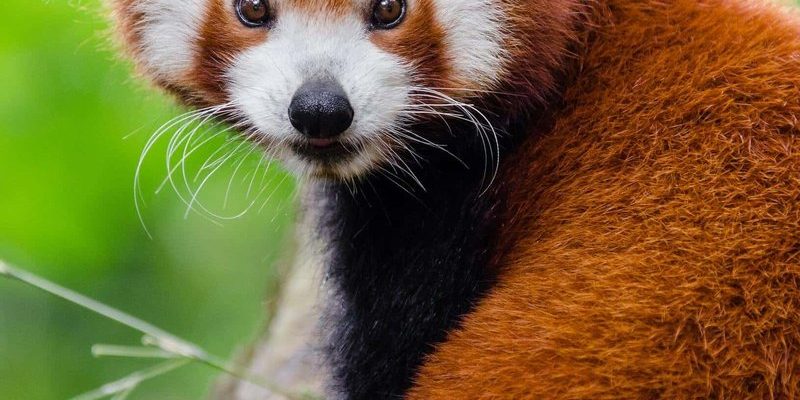
Wolf worms are the larvae of the botfly, a creature with a unique and often misunderstood life cycle. These parasites can invade the skin of mammals, causing discomfort and health issues. But perhaps the most fascinating aspect of this infestation is how it affects the behavior of animals. When animals get sick or uncomfortable, their reactions can be quite telling. You might be wondering why it’s important to understand these changes in behavior. After all, it’s not just about science; it’s about observing the interconnectedness of life and how even tiny parasites can impact larger ecosystems.
What Are Wolf Worms?
Wolf worms, also known as cuterebra, are the larvae of the botfly. They typically infect mammals, particularly small ones like rabbits, squirrels, and sometimes even domestic pets. Picture a tiny grizzly bear, thick with fur but feeling the weight of an unwanted guest beneath its skin. The botfly lays its eggs in areas where the host is likely to find them—usually around the mouth or nose.
Once the larvae hatch, they burrow into the host’s skin, causing discomfort and various health issues. This process doesn’t just affect the animal physically; it starts influencing their behavior in surprising ways. For instance, animals may become increasingly agitated, avoid social interactions, or even struggle to perform daily tasks. This is where the story of wolf worms takes an interesting turn, as the behavior changes can signal deeper issues within the ecosystem.
Physical Symptoms of Infestation
When an animal is infested with wolf worms, you might notice several physical symptoms. These can range from localized swelling at the infection site to more severe signs like lethargy and loss of appetite. Imagine having a painful thorn stuck in your side; it can make even the simplest tasks feel monumental.
Common symptoms include:
- Swelling: This can occur around the site where the larvae have burrowed in, often resembling a small, raised lump.
- Fur Loss: Infected areas may lose hair, which can expose sensitive skin.
- Scratching and Agitation: Animals will often scratch at the area, showing signs of discomfort or pain.
- Lethargy: An infested animal may exhibit low energy levels, avoiding usual activities like playing or hunting.
Recognizing these symptoms early is essential for treatment. If left untreated, infestation can lead to more severe health complications, including infections or even death.
Behavioral Changes in Infested Animals
So, how do wolf worms impact the behavior of their host animals? Here’s the thing: the presence of a parasite can trigger a wide range of emotional and physical reactions. For example, an animal struggling with discomfort may become more withdrawn, avoiding interactions with peers or family. This behavior can change the social dynamics within a group, as the sick animal pulls away from others.
Furthermore, infested animals may become more aggressive or anxious. Think about how you felt when you had a bad headache; you might have snapped at loved ones or avoided social events. The same concept applies here. An increase in irritability can lead to changes in feeding patterns, where an animal might become less willing to hunt or share food with others.
Additionally, behaviors such as grooming or self-care can decrease significantly. Animals often engage in grooming to soothe themselves, but if they’re preoccupied with pain from an infestation, you may see a noticeable decline in this behavior. Observing these shifts is crucial for wildlife researchers trying to understand the broader impacts of parasites on animal populations.
Impact on Ecosystems
The changes in individual animal behavior due to wolf worm infestations can ripple throughout ecosystems. Imagine a pebble dropped into a pond; the ripples spread out, affecting everything nearby. When host animals become ill and change their behaviors, it can disrupt food chains and predator-prey relationships.
For instance, if a key prey species like a rabbit becomes less active due to infestation, predators relying on that rabbit for food may struggle to find enough to eat. This can lead to starvation in predator populations, altering the balance of the entire ecosystem. It’s a delicate dance, and any shift in one part can significantly affect the whole.
Additionally, an increase in sick animals might lead to a rise in scavenger populations that feed on dead or dying hosts. While this might sound beneficial at first, it can also lead to overcrowding and resource depletion for these scavengers, creating competition for food and shelter.
How Animals Cope with Infestation
Despite the stress and behavioral changes caused by wolf worm infestations, animals have their unique ways of coping. It’s almost like watching an athlete overcome a tough challenge. Some animals may engage in more solitary behaviors to conserve energy while healing. Others might even exhibit grooming behaviors that focus on the infected area, trying to remove the parasite themselves.
Animals also rely on their instinct to seek shelter or hide when feeling vulnerable. For instance, you might see an infested animal retreating to a den or sheltered area, reducing activity to focus on recovery. This is nature’s way of encouraging healing, even if it means avoiding social interactions temporarily.
Additionally, if an animal’s young are affected, mothers often go into protective overdrive. They might keep their distance from the rest of the group or become more aggressive against potential threats. This protective behavior ensures that they can care for their sick offspring without additional stress from the outside world.
Preventing Wolf Worm Infestations
Prevention is always better than dealing with an infestation after it happens. There are several steps wildlife enthusiasts and pet owners can take to minimize the risks associated with wolf worms. Think of it as safeguarding your home against intruders; proactive steps can make a significant difference.
- Regular Check-Ups: For pets, regular veterinary check-ups can help catch any signs of infestation early.
- Maintaining Clean Environments: Keeping habitats clean and free of debris can reduce breeding grounds for botflies.
- Monitoring Behavior: Keep an eye on animals in the wild or at home. Notice any sudden changes in behavior, which could be early signs of trouble.
Even in wild populations, researchers recommend monitoring animal health and tracking any significant changes or trends. By understanding these patterns, we can work to protect our wildlife and the environments they inhabit.
Treatment Options for Infested Animals
If an animal does become infested with wolf worms, treatment options vary depending on the severity of the infestation. In the wild, it’s important for animals to have safe spaces where they can recover naturally. However, in domestic situations, veterinary care is crucial.
Here are common treatment methods:
- Medication: Vets may prescribe medications to relieve discomfort or pain during the healing process.
- Removal: In some cases, the larvae can be physically removed by a veterinarian, which can greatly reduce the chances of complications.
- Supportive Care: Ensuring the animal has a comfortable, stress-free environment can aid in recovery.
Understanding the treatment options available can ease the anxiety of dealing with an infestation and provide hope for successful recovery.
Closing Thoughts
Animal behavior changes during wolf worm infestations reveal how deeply interconnected health and environment are in the animal kingdom. Observing these changes allows us to comprehend the impact of parasites on wildlife populations and ecosystems as a whole. Whether you’re a wildlife enthusiast or simply curious about animal behavior, understanding the effects of wolf worms provides valuable insights into the delicate balance of life.
By staying informed about the signs and impacts of wolf worm infestations, we can contribute to healthier environments for our furry friends, both in the wild and at home. Remember, even the smallest creatures can have a significant impact, and recognizing their struggles can help us foster a deeper respect for all life forms.

